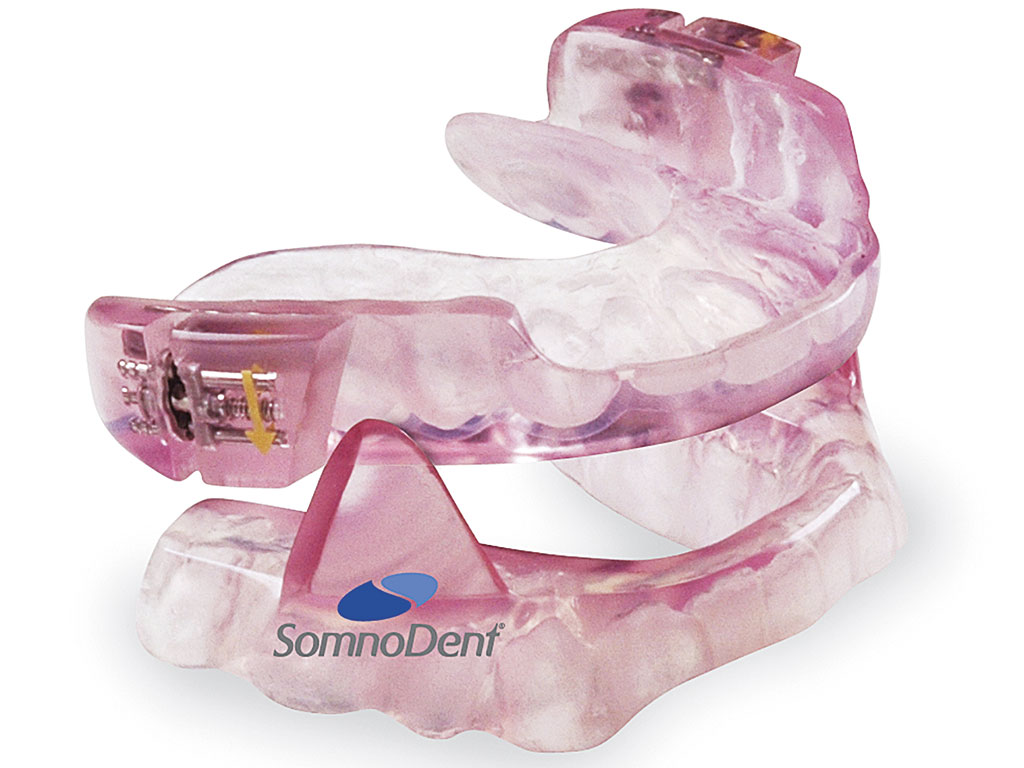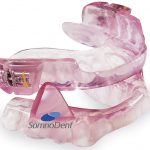Integrating DSM in your practice
Dental Sleep Medicine (DSM) is a fascinating and fulfilling addition to the practice of dentistry. Dr Aditi Desai explains how to introduce it into your practice
Would you turn away more than half your patients because you don’t offer the treatment they need? That’s just what you could be doing. A recent survey 1 of 2,438 UK residents in co-habiting relationships found that 61 per cent of respondents in Scotland admitted that either they or their partner snored. Of all the regions and counties in the UK, Scotland came out top in terms of percentage of snorers in the population.
With training and minimal outlay on equipment, you could treat those of your patients who snore and market the treatment as a service to potential new patients. To assess the demand, simply add these questions to your routine medical health questionnaire:
Do you wake with a headache in the morning? Or do you or your partner snore?
Do you feel tired or sleepy during the day?
Snoring and excessive daytime sleepiness are two cardinal symptoms of obstructive sleep apnoea
Sleep apnoea explained
Before I explain how to introduce Dental Sleep Medicine (DSM) in your practice, here’s some background information. Snoring is a sleep-related breathing disorder (SRBD), along with or without obstructive sleep apnoea (OSA).
Snoring and excessive daytime sleepiness are two cardinal symptoms of obstructive sleep apnoea. All apnoeacs are snorers but all snorers are not apnoeac. There is a distinction between central sleep apnoea (CSA) and OSA. CSA is the result of the sleeping person not breathing due to problems with the central respiratory drive that fails to transmit the appropriate signals between the brain’s respiratory centre and the respiratory muscles, which fail to act. OSA is the result of collapse of the unsupported airway due to disparity between the pressure within the airway versus that outside the airway. This leads to reduction of oxygen saturation in the blood and increase of carbon dioxide in the system due to failure to exhale it – hypoxia and hypercapnia.
CPAP and MRDs
Continuous Positive Airway Pressure (CPAP), where sleeping patients wear a face or nasal mask connected to a pump that produces a positive flow of air into the nasal passages to keep the airway open, is widely regarded as the most effective treatment. Surgery is usually an option of last resort.
However, although CPAP is very effective, many people can’t tolerate wearing the mask. This is where DSM comes in because the alternative, a custom-made intra-oral appliance or mandibular repositioning device (MRD), worn in the mouth at night can greatly reduce, if not completely eliminate, snoring. MRDs are primarily indicated for the treatment of simple, non-apnoeic snoring as well as for mild to moderate OSA when prescribed and monitored as part of a multidisciplinary team. I’ll write more about MRDs below.
Integrating DSM
The steps involved in becoming a practice that offers treatment for snoring are training, networking, continuous education and promotion. A dentist in the team needs appropriate training, they should network with local medical practitioners and specialists in respiratory medicine and ENT, the reception staff, hygienist and nurses must be educated in the practice’s new dental sleep medicine service and promote the service widely.
- Fig 1 The SomnoDent
- Fig 2 ResMed Narval CC
- Fig 3 George Gauges. Photo courtesy of Eurodontic Ltd
Training
Knowledge of the disease is essential for introducing DSM into your practice. A wider knowledge of other sleep disorders is useful but not essential. The British Society of Dental Sleep Medicine (BSDSM) of which I am president, trains dentists to screen, assess for SRBDs and follow a documented pathway of practice to provide the most appropriate treatment for the patient. Most BSDSM courses are of one-day duration and include hands-on experience with MRDs. You will learn what equipment you need (not very much) and meet people who have introduced DSM into their practice. Dental technicians also attend these courses to learn about MRDs so you may wish to team up with someone from the laboratory you use. Go to www.dentalsleepmed.org.uk for more information and details of BSDSM courses.
The treatment of snoring and OSA does not fall within the scope of dentistry. However, the professional indemnity insurers, DPL and DDU, each have a position statement for their members who provide DSM treatment who can seek medico-legal advice, if the member has documented evidence of having followed appropriate care and is duly qualified to provide such treatment.
Networking
While in the past it was often not keen to work with dentists, the medical profession – physicians and ENT consultants – is actively seeking qualified dentists to treat patients not suitable for or intolerant of CPAP. Also, GPs refer simple snorers and mild apnoeacs, who are not suitable nor eligible for secondary referral to a sleep centre, to dentists. You should introduce yourself to local medical practitioners and specialists in respiratory medicine and ENT.
Education
It’s important to disseminate information about your new DSM service to all your team members, including reception staff. When asked if there’s a treatment for snoring, they should answer with sufficient knowledge to encourage the person to make an appointment for an initial assessment. They also need to provide a broad guide to the likely costs involved.
You’ll need to decide on a fee scale for DSM. Allow at least an hour for a new patient’s first visit for a snoring and OSA assessment and possibly impressions for an MRD. Most practices have a standard initial assessment charge, then an overall fee for providing an MRD (each device will have a different cost) and initial follow-up visits for adjustment.
Promotion
Members of the BSDSM who are dentists with a special interest in snoring and sleep apnoea are listed on the ‘Find a dentist near you’ page of the BSDSM website. There are currently only four in Scotland so you will be entering a field where likely demand is much greater than supply. Nevertheless, you should promote your new service in all the usual ways, including adding (for example) ‘Do you snore?’ to your patient medical history form.
MRDs – an overview
Although there are several types of MRD and around 100 different ones on the market, they all share these principles: – to open the vertical dimension of the airway – there are different theories about the amount of opening vertical dimension (OVD) required and to position the mandible and tongue forward.
They must also satisfy the following criteria:
- Be made from biocompatible materials
- Be durable
- Have an acceptable neutral taste and smell
- Be adjustable
- Have good retention
- Have a track record of minimal side effects
- Have acceptable aesthetics
- Be cost effective – which may be countermanded by durability.
The materials used range across hard acrylic and soft thermoplastic to cobalt chrome and can affect the degree of customisation possible. Coupling mechanisms – used to connect the upper and lower splints – may be located in anterior or posterior segments. Some MRDs allow lateral and vertical mandibular movement, whereas others lock the mandible in position.
In summary, an MRD that functions correctly and is comfortable for the patient results from an accurate clinical assessment by the dentist combined with expertise and skill from the dental technician and close liaison between the two is vital.
Conclusions
Integrating DSM into a dental practice is straightforward, not expensive and not time consuming. In Scotland, even more so than other parts of the UK, there is a large cohort of potential patients. Globally, steady growth has been consistently forecast in the sleep apnoea devices market – a recent report 2 predicting a 7.7 per cent increase by 2020. What are you waiting for?
About the author
Dr Aditi Desai is President of the British Society of Dental Sleep Medicine (BSDSM). She has accreditation from the European Academy of Dental Sleep Medicine, serves on the Council of the Odontological and Sleep Section at the Royal Society of Medicine. Dr Desai consults from 76 Harley Street, and London Bridge Hospital.
References
- www.ergoflex.co.uk/blog/category/sleep-research/snoring-map-of-the-uk (accessed 20 January 2016)
- www.grandviewresearch.com/industry-analysis/sleep-apnea-devices-market (accessed 20 January 2016)
Verifiable CPD Questions
Aims and objectives
- To establish the background to dental sleep medicine including the likely demand for treatment
- To explain the elements for introducing dental sleep medicine into a dental practice
- To give concise explanations of sleep related breathing disorders relevant to dental sleep medicine
- To give an overview of the features of mandibular repositioning devices used in dental sleep medicine.
Learning outcomes
- A basic understanding of sleep related breathing disorders including snoring and sleep apnoea
- Sufficient knowledge of the various elements involved in introducing dental sleep medicine into a dental practice to decide whether to pursue it further
- Know where to access training in dental sleep medicine
- Understand the basic features of mandibular repositioning devices used in dental sleep medicine treatment.




Comments are closed here.